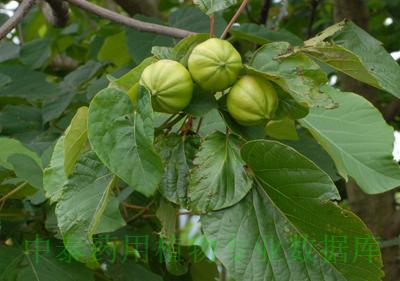| [English Name] | Tungoiltree Lea | |
| [Chinese Name] | 油桐 | |
| [Pinying Name] | Youtong | |
| [Latin Name] | Verniciae Fordii Folium | |
| [Genera] | Euphorbiaceae | |
| [Efficacy] | xiaoshiyao | |
| [Pictures] | Plant picture | Drug picture |

|

|
|
| [Alias] | ||
| [Source] | ||
| [Plant morphology] | ||
| [Distribution] | ||
| [Gathering and processing] | ||
| [Characteristics] | ||
| [Ecology] | Tungoiltree Lea prefers light and warm,avoids sever cold as taboos. Low temperature(-8~- |
|
| [Chemical composition] | ||
| [Pharmacological activities] |
Elaeostearic acid can trigger nausea, vomiting and diarrhea. In Addition, it can damage kidney, liver, spleen and nerve when it absord into blood[1]. |
|
| [Clinical trial] | ||
| [Properties] | ||
| [Medical and other Uses] | ||
| [Dosage] | ||
| [Cautions] | ||
| [Traditional usage] | ||
| [Toxicological studies] | ||
| [Pharmaceutical preparations] | ||
| [References] |
Pharmacologic Actions: [1] Guo Xiaozhuang. Dictionary of toxic Chinese herbal medicine. |
|